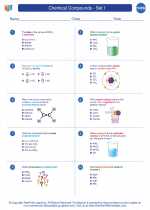Crust
In chemistry, the term "crust" refers to the solid outermost layer of the Earth. The Earth's crust is made up of a variety of elements and compounds, and it plays a crucial role in many geological and chemical processes. Understanding the composition and properties of the Earth's crust is important for understanding the behavior of elements and compounds in the environment, as well as for studying the formation and movement of rocks and minerals.
Composition of the Earth's Crust
The Earth's crust is primarily composed of oxygen, silicon, aluminum, iron, calcium, sodium, and potassium. These elements make up the majority of the crust by weight, with other elements present in smaller quantities. The composition of the crust can vary depending on the location and geological history of the area, leading to different types of rocks and minerals being present in different regions.
Types of Rocks in the Earth's Crust
The rocks in the Earth's crust can be broadly classified into three main types: igneous, sedimentary, and metamorphic rocks. Igneous rocks are formed from the solidification of molten magma, sedimentary rocks are formed from the accumulation and compression of sediment, and metamorphic rocks are formed from the alteration of existing rocks due to heat and pressure.
Chemical Processes Involving the Earth's Crust
The Earth's crust is involved in a variety of chemical processes, including weathering, erosion, and the formation of minerals. Weathering is the breakdown of rocks and minerals at the Earth's surface, leading to the release of ions and the formation of new minerals. Erosion involves the movement of sediments and soils by water, wind, or ice, leading to the transport of elements and compounds across the Earth's surface. The formation of minerals in the Earth's crust occurs through a variety of processes, including crystallization from magma, precipitation from aqueous solutions, and the alteration of existing minerals through chemical reactions.
Study Guide
- What are the primary elements found in the Earth's crust?
- Describe the three main types of rocks found in the Earth's crust.
- Explain the chemical processes involving the Earth's crust, including weathering, erosion, and mineral formation.
- Discuss the variations in the composition of the Earth's crust in different geological regions.
By understanding the composition and properties of the Earth's crust, chemists and geologists can gain insights into the behavior of elements and compounds in the environment, as well as the formation and movement of rocks and minerals.
.◂Chemistry Worksheets and Study Guides High School. Chemical Compounds - Set I

 Worksheet/Answer key
Worksheet/Answer key
 Worksheet/Answer key
Worksheet/Answer key
